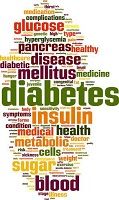Article
Frozen Shoulder Gets Quick Thaw in Diabetes Patients
Author(s):
Extracorporeal shock therapy helped patients with diabetes improve their range of motion when suffering from "frozen shoulder" a study in Italy found.

A group of diabetic patients who received non-invasive shockwave therapy for a condition commonly known as frozen shoulder had improved range of motion and diminished pain, according to results of a small pilot study in Italy.
The study evaluated the effect of extracorporeal shock therapy as treatment for adhesive capsulitis on 50 patients with either type 1 or type 2 diabetes, according to an article in Diabetes Care, a journal of the American Diabetes Association. The therapy is delivered by sound waves as non-invasive shocks applied to the shoulder area.
Extracorporeal shock therapy has previously been used on patients who are not diabetic to treat adhesive capsulitis of the shoulder (ACS), a condition marked by intense shoulder pain with progressive limitation of joint mobility, states the article. Researchers of this study believe that it is the first to assess the therapy on functional outcomes in patients with diabetes and ACS.
Other treatment options for the condition include oral or intra -articular steroid injections, which may not be ideal for patients with diabetes because continued use of steroids can lead to heightened glucose levels, “thus affecting glycemic control in patients with diabetes,” notes lead author Flavia Santoboni.
“Therefore, it would be preferable to avoid steroids and opt for alternative therapies in these individuals,” Santoboni states in the article.
Adhesive capsulitis can negatively impact quality of life and it also can lead to increased health costs for patients who experience it, the authors note. It is the most prevalent musculoskeletal disorder of the upper extremity among people who have diabetes, according to the article.
The study conducted at the Sant’ Andrea Hospital in Rome was an uncontrolled, observational intervention trial that enrolled men and women with diabetes (seven patients with type 1 and 43 with type 2). All participants had ACS and at the time of the study had experienced shoulder pain, had restricted range of motion for at least 3 months and had received no treatment besides analgesics for that period, states the article.
At least two weeks before the study started, all patients had shoulder radiographs, soft-tissue sonography and or MRIs completed. Functional outcome evaluations and questionnaires were conducted at baseline and following treatment at designated timepoints up to six months.
Patients in the study were given shockwave treatment once weekly for three weeks. The treatment involved 2,400 shots in an anterior-to posterior direction on the anterior shoulder joint using a low to moderate energy flux density, depending on a patient’s pain tolerance.
Results of functional outcomes indicated that in all cases, range of motion in arm, shoulder and hand improved and pain scores decreased, according to the article. The improvements continued for months after the treatment, indicating that as a long-term solution, shockwave therapy may be a viable treatment option for patients needing to avoid steroids, the article stated.
The authors concluded that extracorporeal shockwave therapy “may be effective, feasible, and well tolerated and can therefore represent a valid alternative to steroids for ACS treatment in patients with diabetes,” but they noted that “these findings need to be confirmed by a randomized controlled trial.”
The study, "Extracorporeal Shockwave Therapy Improves Functional Outcomes of Adhesive Capsulitis of the Shoulder in Patients With Diabetes," is published in the journal Diabetes Care.
Related Coverage:
A Better Diabetes Treatment Hiding in Platypus Venom?
Shock Wave Therapy Effective for Coccydynia
Sitagliptin Equals Insulin in Diabetic Patients Admitted to Hospital





